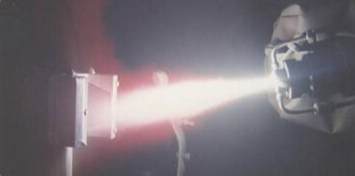

current position:Information and data>New thermal spray technology and characteristics
1. Explosive spraying

Explosive spraying is to use the gas expansion caused by the ignition and combustion of oxygen and flammable gas to generate an explosion, release heat energy and shock waves, and use the energy and shock waves of the pulsed gas explosion to heat and accelerate the sprayed powder material to bombard the surface of the workpiece. coating.
The explosive spray coating has high bonding strength, up to 70MPa or more, and the coating is dense (porosity <2); the surface temperature of the workpiece is low, and the maximum temperature does not exceed 200 °C; the coating is uniform and the thickness is easy to control, and the coating thickness is generally 0.025-0.3mm, the surface roughness of the coating can be less than Rn1.6m, and can reach Ra0.025m after grinding. However, the equipment is expensive and noisy, so it must be carried out in a soundproof room.
2. Electrothermal explosion spraying
Electrothermal explosion spraying uses a metal conductor (wire, foil or powder) to apply an instantaneous high voltage along the axial direction, and a current of 106-107A/cm2 is generated inside the metal to explode, and the generated shock wave makes the metal particles spray to the substrate at a very high speed The surface is then rapidly cooled on the surface of the substrate to form a coating. Electrothermal explosive spraying can realize the metallurgical bonding of the coating and the substrate, and improve the bonding strength of the coating.
3. Supersonic flame spraying
The principle of supersonic flame spraying is: fuel gas and oxidant are introduced into the combustion chamber in a certain proportion to mix, resulting in explosive combustion. The gas (Ar, N2) is quantitatively fed into the high-temperature gas along the tungsten carbide central sleeve in the combustion head, and is brought out of the nozzle by the high-temperature and high-speed gas, and sprayed directly on the workpiece to form a coating.
Supersonic flame spraying has the advantages of low particle temperature, high moving speed, dense coating, high bonding strength and high spraying efficiency.
4. Supersonic arc spraying
The supersonic arc spraying machine is mainly composed of power supply, supersonic spray gun, wire feeding device, control box and compressed air system. It is made of metal or alloy into two melting electrodes, which are driven by a motor at a variable speed, and a short circuit occurs at the mouth of the spray gun to trigger an arc and melt. The structure of the spray gun adopts a Laval nozzle. When the compressed air passes through the Laval nozzle, the airflow speed can be significantly increased, and the atomized particles can be driven to achieve supersonic spraying. Supersonic arc spraying has the characteristics of long service life, low process cost and high efficiency.
5. Supersonic plasma arc spraying
This technology has the characteristics of high temperature and high speed, especially the obtained oxide and carbide ceramic coatings and cermet coatings have the characteristics of dense coating, low porosity and high bonding strength.
6. Cold spray
Cold spraying, also known as cold aerodynamic spraying method, uses preheated compressed gas (usually 100-700 ℃) to accelerate solid powder particles (5um-50um) to 300-1500m/s, and the powder particles impact at high speed in a completely solid state The substrate produces a large plastic deformation and is deposited on the surface of the substrate to form a coating. Cold spraying has the advantages of low spraying temperature, high spray particle deposition rate, low porosity, relatively simple equipment, and compressive stress on the coating surface.
Hot information

